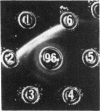Abstract
The antihypertensive drug hydralazine can induce in man a syndrome similar to spontaneous systemic lupus erythematosus (SLE). The pathogenesis of this drug-induced syndrome is not understood. In this investigation, five groups of rabbits were studied: group I, 10 rabbits hyperimmunized with hydralazine conjugated to human serum albumin (HSA) in complete Freund's adjuvant (CFA); group II, four rabbits with HSA in CFA; group III, four rabbits with CFA alone; group IV, five rabbits with hydralazine conjugated to rabbit serum albumin (RSA); and group V, four rabbits with a major metabolite of hydralazine conjugated to HSA. The rabbits immunized with hydralazine-HSA developed rising titers of antibodies to hydralazine and progressively increasing amounts of antibodies to both single-stranded and native DNA. The antibodies to DNA were cross-reactive with hydralazine as determined by inhibition of DNA binding and DNA hemagglutination tests. Similar results were obtained in rabbits immunized with the metabolite-HSA compound except the major hapten antibody response was to the metabolite. The DNA antibodies in this group were also capable of being absorbed by metabolite-HSA as well as hydralazine-HSA, indicative of the cross-reactivity between hydralazine and its metabolite. Immunization with hydralazine-RSA caused rabbits to produce antibodies to hydralazine but not to DNA, indicating the requirement for an immune response to the carrier protein in order for antibodies reactive with DNA to be produced. Thus, hyperimmunization of rabbits with hydralazine-protein conjugates may provide a useful animal model of SLE. The data suggests that an immune response to hydralazine may be important in human hydralazine-induced SLE.
Full text
PDF
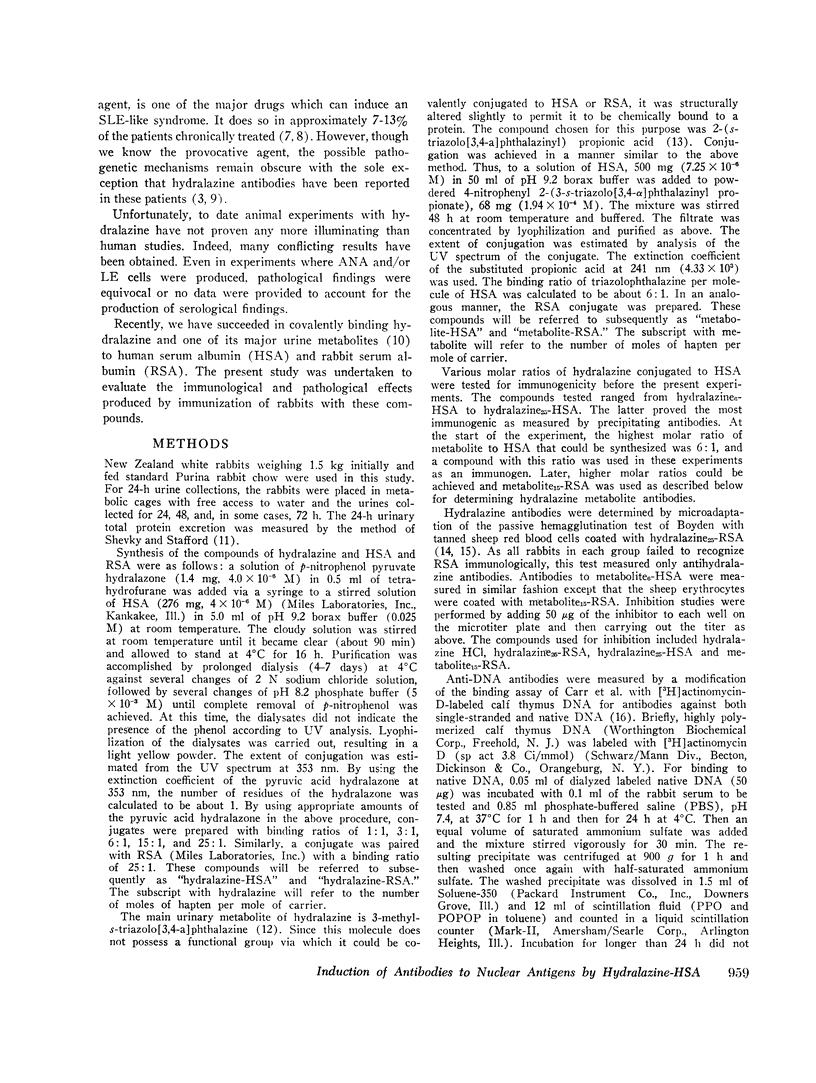
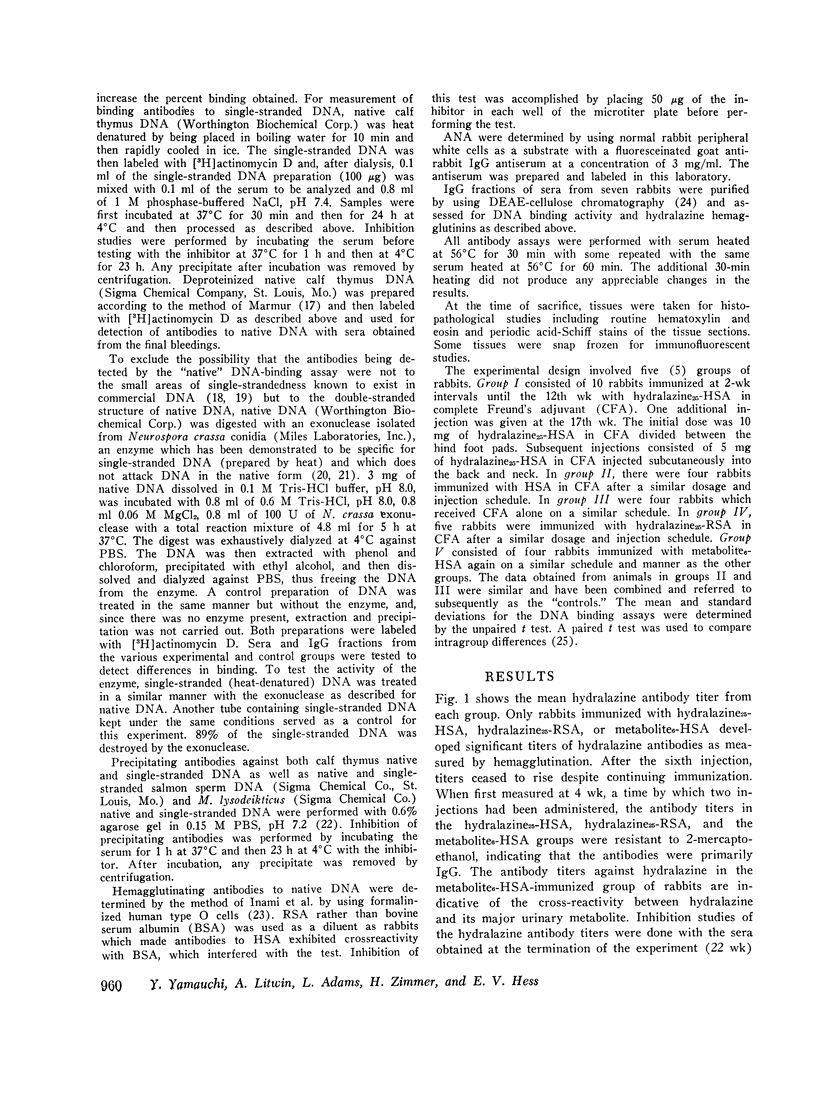
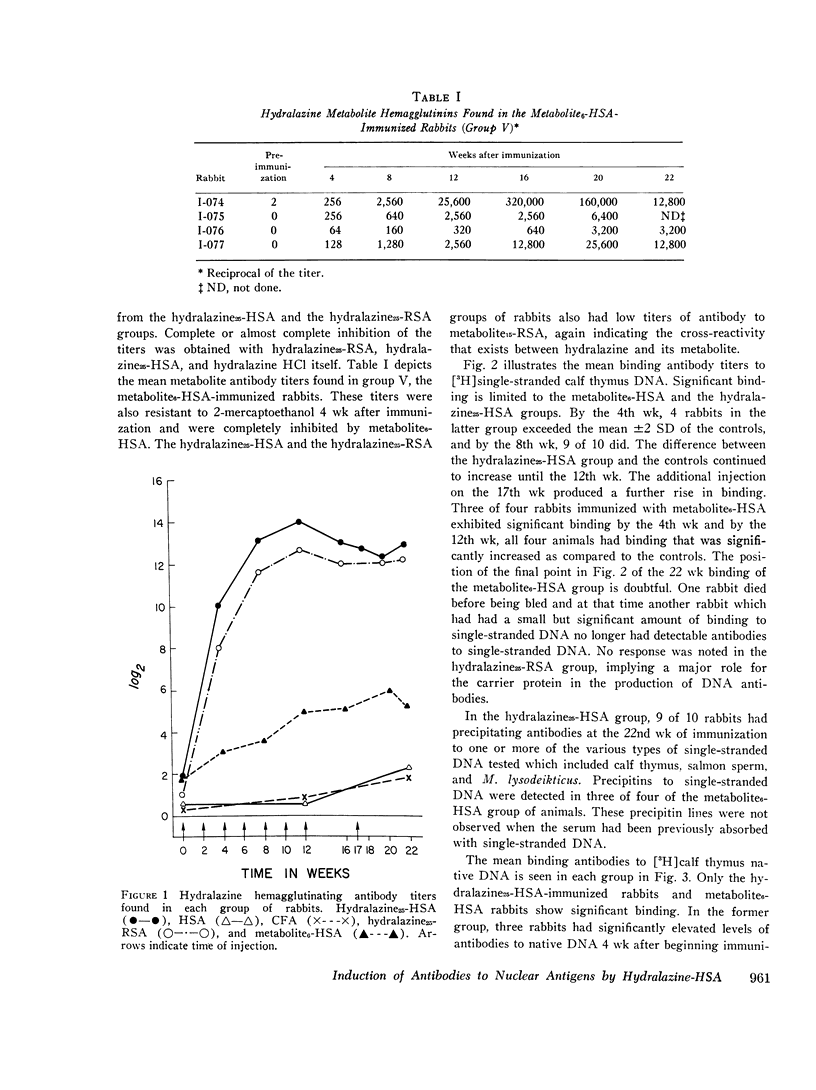

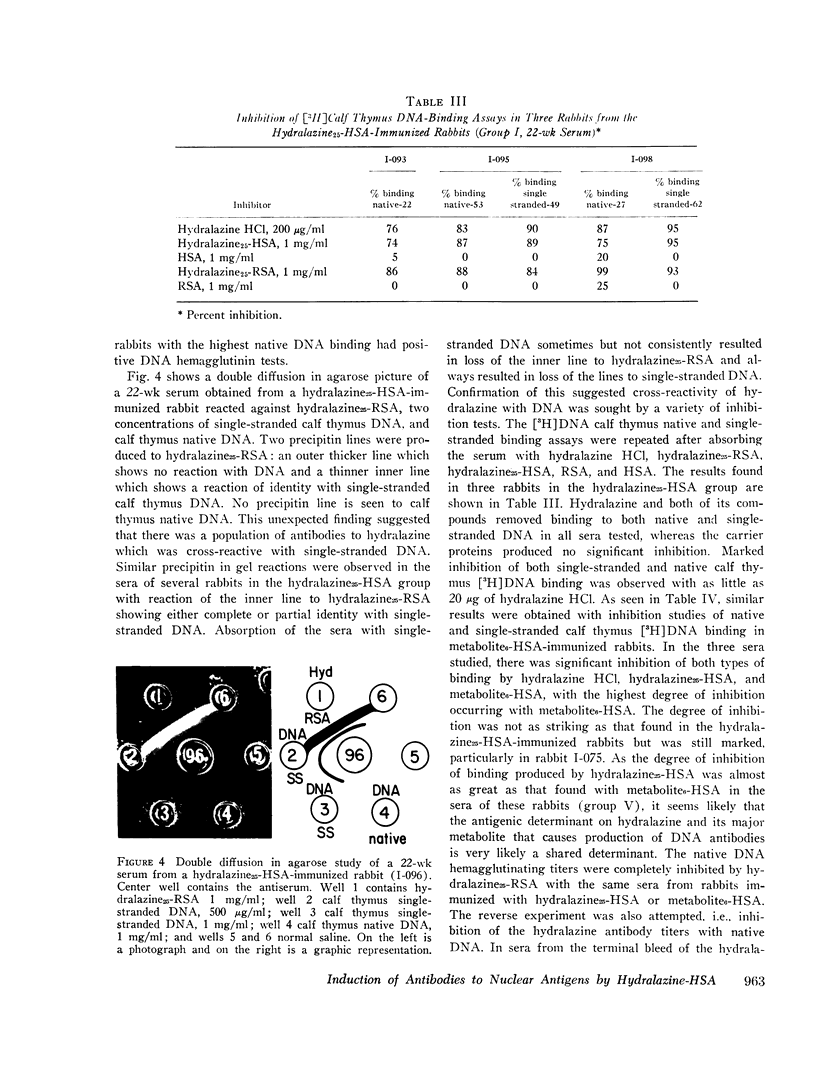
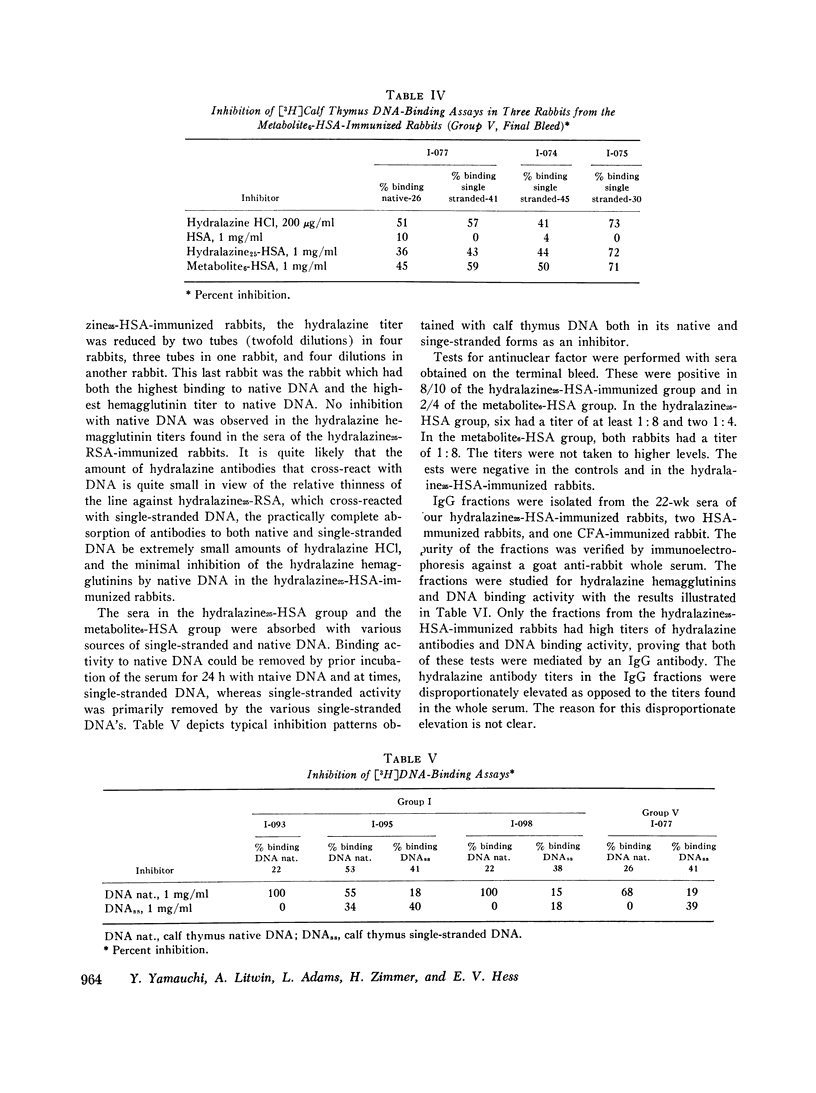
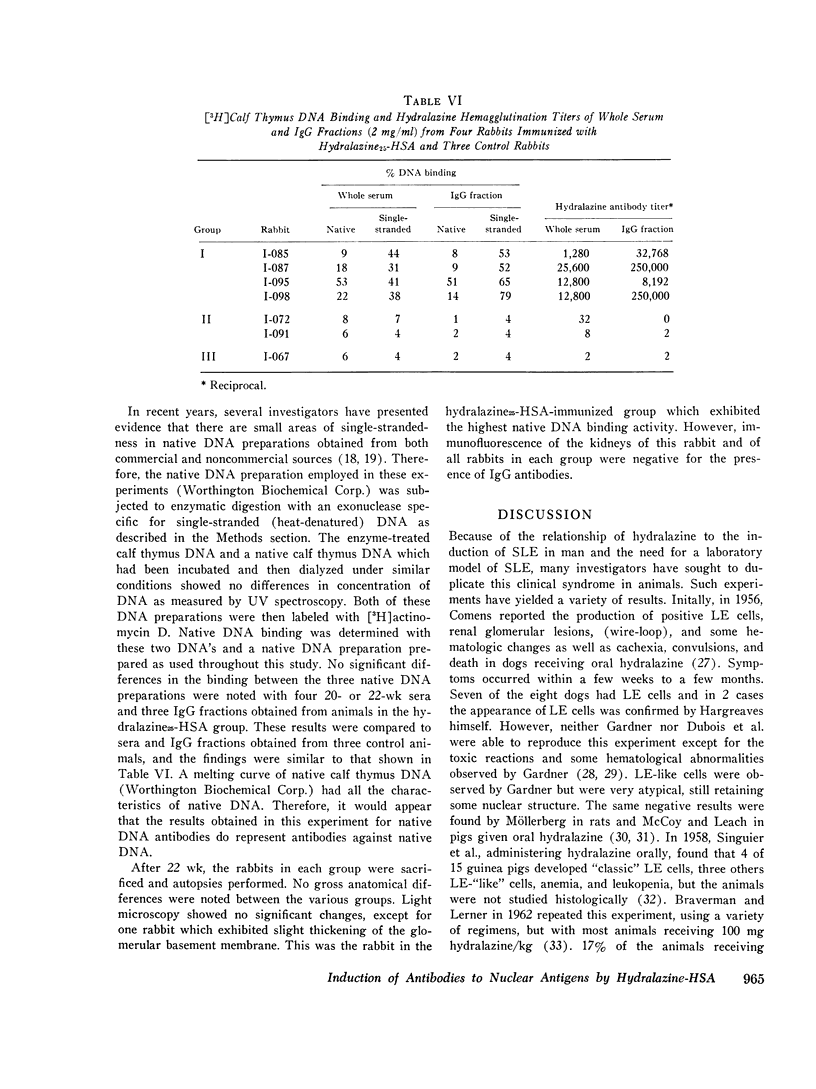
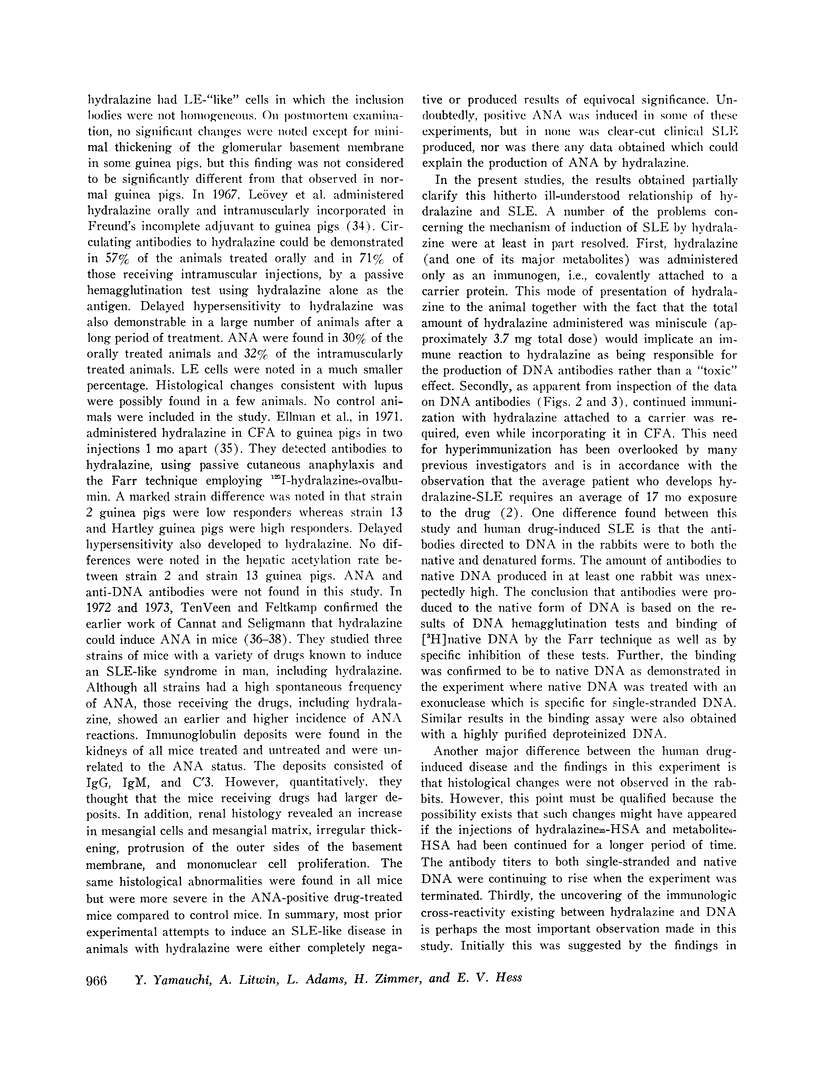
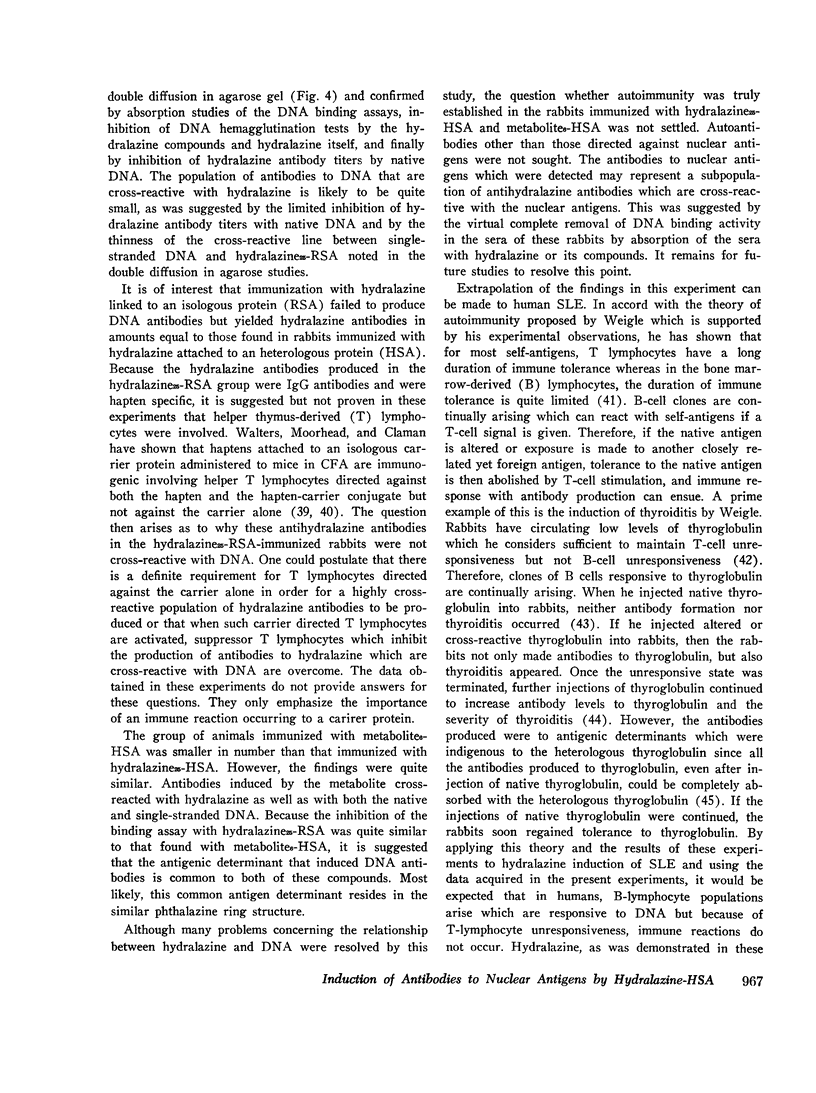
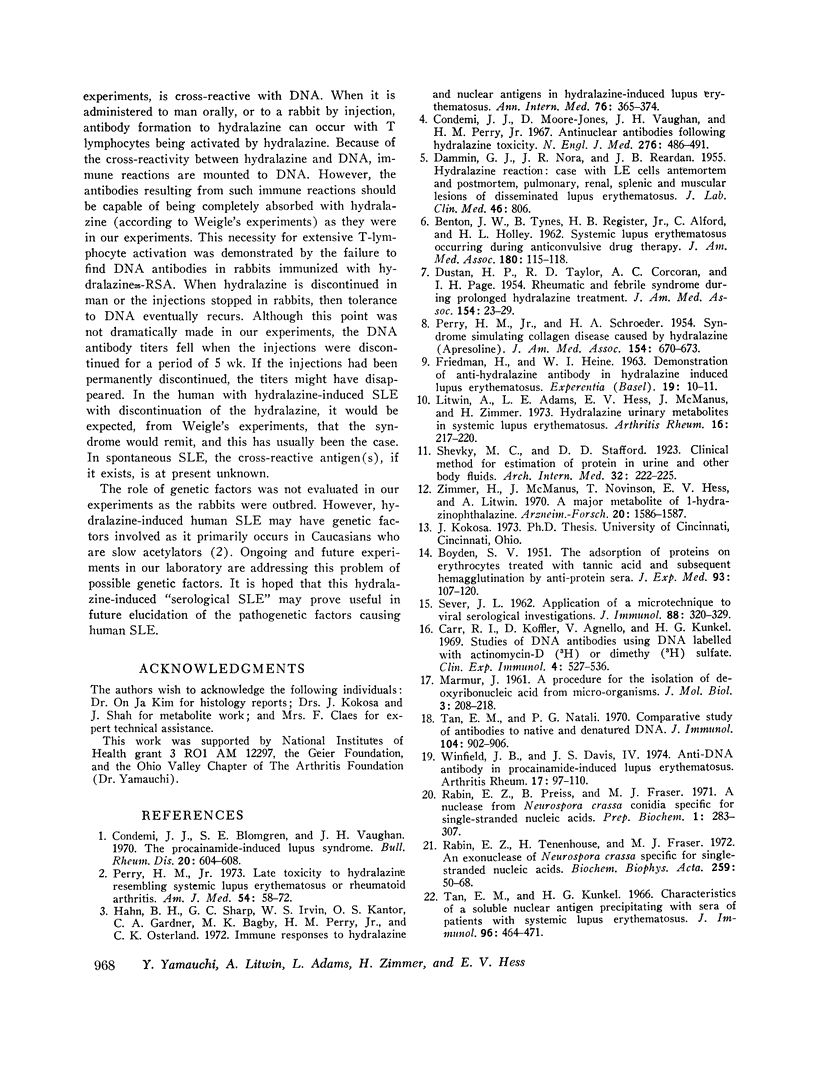
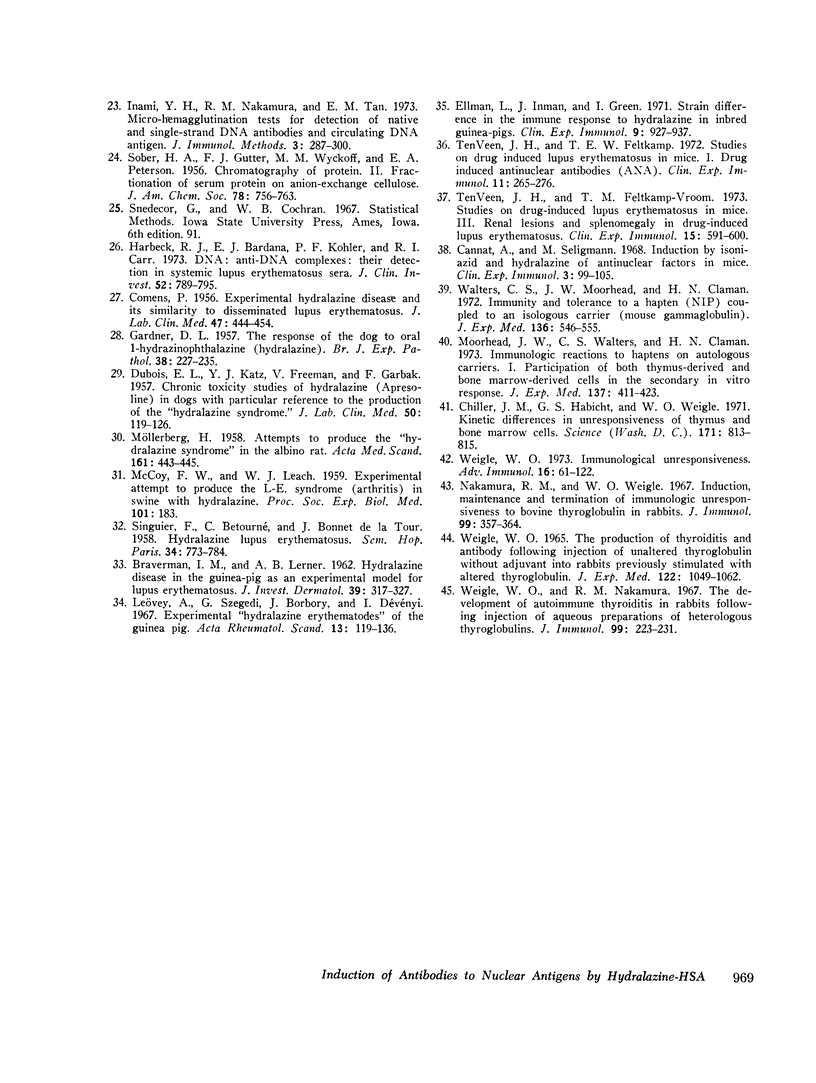
Images in this article
Selected References
These references are in PubMed. This may not be the complete list of references from this article.
- BOYDEN S. V. The adsorption of proteins on erythrocytes treated with tannic acid and subsequent hemagglutination by antiprotein sera. J Exp Med. 1951 Feb;93(2):107–120. doi: 10.1084/jem.93.2.107. [DOI] [PMC free article] [PubMed] [Google Scholar]
- BRAVERMAN I. M., LERNER A. B. Hydralazine disease in the guinea-pig as an experimental model for lupus erythematosus. J Invest Dermatol. 1962 Oct;39:317–327. doi: 10.1038/jid.1962.119. [DOI] [PubMed] [Google Scholar]
- COMENS P. Experimental hydralazine disease and its similarity to disseminated lupus erythematosus. J Lab Clin Med. 1956 Mar;47(3):444–454. [PubMed] [Google Scholar]
- Cannat A., Seligmann M. Induction by isoniazid and hydrallazine of antinuclear factors in mice. Clin Exp Immunol. 1968 Jan;3(1):99–105. [PMC free article] [PubMed] [Google Scholar]
- Carr R. I., Koffler D., Agnello V., Kunkel H. G. Studies on DNA antibodies using DNA labelled with actinomycin-D (3H) or dimethyl (3H) sulphate. Clin Exp Immunol. 1969 May;4(5):527–536. [PMC free article] [PubMed] [Google Scholar]
- Chiller J. M., Habicht G. S., Weigle W. O. Kinetic differences in unresponsiveness of thymus and bone marrow cells. Science. 1971 Feb 26;171(3973):813–815. doi: 10.1126/science.171.3973.813. [DOI] [PubMed] [Google Scholar]
- Condemi J. J., Moore-Jones D., Vaughan J. H., Perry H. M. Antinuclear antibodies following hydralazine toxicity. N Engl J Med. 1967 Mar 2;276(9):486–491. doi: 10.1056/NEJM196703022760902. [DOI] [PubMed] [Google Scholar]
- DUBOIS E. L., KATZ Y. J., FREEMAN V., GARBAK F. Chronic toxicity studies of hydralazine (apresoline) in dogs with particular reference to the production of the hydralazine syndrome. J Lab Clin Med. 1957 Jul;50(1):119–126. [PubMed] [Google Scholar]
- DUSTAN H. P., TAYLOR R. D., CORCORAN A. C. Rheumatic and febrile syndrome during prolonged hydralazine treatment. J Am Med Assoc. 1954 Jan 2;154(1):23–29. doi: 10.1001/jama.1954.02940350025006. [DOI] [PubMed] [Google Scholar]
- Ellman L., Inman J., Green I. Strain difference in the immune response to hydralazine in inbred guinea-pigs. Clin Exp Immunol. 1971 Dec;9(6):927–937. [PMC free article] [PubMed] [Google Scholar]
- FRIEDMAN H., HEINE W. I. Demonstration of anti-hydralazine antibody in hydralazine induced lupus erythematosus. Experientia. 1963 Jan 15;19:10–11. doi: 10.1007/BF02135326. [DOI] [PubMed] [Google Scholar]
- GARDNER D. L. The response of the dog to oral L-hydrazinophthalazine (hydralazine). Br J Exp Pathol. 1957 Apr;38(2):227–235. [PMC free article] [PubMed] [Google Scholar]
- Hahn B. H., Sharp G. C., Irvin W. S., Kantor O. S., Gardner C. A., Bagby M. K., Perry H. M., Jr, Osterland C. K. Immune responses to hydralazine and nuclear antigens in hydralazine-induced lupus erythematosus. Ann Intern Med. 1972 Mar;76(3):365–374. doi: 10.7326/0003-4819-76-3-365. [DOI] [PubMed] [Google Scholar]
- Harbeck R. J., Bardana E. J., Kohler P. F., Carr R. I. DNA:anti-DNA complexes: their detection in systemic lupus erythematosus sera. J Clin Invest. 1973 Apr;52(4):789–795. doi: 10.1172/JCI107242. [DOI] [PMC free article] [PubMed] [Google Scholar]
- Inami Y. H., Nakamura R. M., Tan E. M. Micro-hemagglutination tests for detection of native and single-strand DNA antibodies and circulating DNA antigen. J Immunol Methods. 1973 Nov;3(3):287–300. doi: 10.1016/0022-1759(73)90024-0. [DOI] [PubMed] [Google Scholar]
- Leôvey A., Szegedi G., Bobory J., Dévényi I. Experimental "hydralazine erythematodes" of the guinea pig. Acta Rheumatol Scand. 1967;13(2):119–136. doi: 10.3109/rhe1.1967.13.issue-1-4.12. [DOI] [PubMed] [Google Scholar]
- Litwin A., Adams L. E., Hess E. V., McManus J., Zimmer H. Hydralazine urinary metabolites in systemic lupus erythematosus. Arthritis Rheum. 1973 Mar-Apr;16(2):217–220. doi: 10.1002/art.1780160212. [DOI] [PubMed] [Google Scholar]
- McCOY F. W., LEACH W. J. Experimental attempt to produce L-E syndrome (arthritis) in swine with hydralazine. Proc Soc Exp Biol Med. 1959 May;101(1):183–183. doi: 10.3181/00379727-101-24875. [DOI] [PubMed] [Google Scholar]
- Moorhead J. W., Walters C. S., Claman H. N. Immunologic reactions to haptens on autologous carriers. I. Participation of both thymus-derived and bone marrow-derived cells in the secondary in vitro response. J Exp Med. 1973 Feb 1;137(2):411–423. doi: 10.1084/jem.137.2.411. [DOI] [PMC free article] [PubMed] [Google Scholar]
- Nakamura R. M., Weigle W. O. Induction, maintenance and termination of immunologic unresponsiveness to bovine thyroglobulin in rabbits. J Immunol. 1967 Aug;99(2):357–364. [PubMed] [Google Scholar]
- PERRY H. M., Jr, SCHROEDER H. A. Syndrome simulating collagen disease caused by hydralazine (Apresoline). J Am Med Assoc. 1954 Feb 20;154(8):670–673. doi: 10.1001/jama.1954.02940420032009. [DOI] [PubMed] [Google Scholar]
- Perry H. M., Jr Late toxicity to hydralazine resembling systemic lupus erythematosus or rheumatoid arthritis. Am J Med. 1973 Jan;54(1):58–72. doi: 10.1016/0002-9343(73)90084-3. [DOI] [PubMed] [Google Scholar]
- Rabin E. Z., Preiss B., Fraser M. J. A nuclease from Neurospora crassa conidia specific for single-stranded nucleic acids. Prep Biochem. 1971;1(4):283–307. doi: 10.1080/00327487108081946. [DOI] [PubMed] [Google Scholar]
- Rabin E. Z., Tenenhouse H., Fraser M. J. An exonuclease of Neurospora crassa specific for single-stranded nucleic acids. Biochim Biophys Acta. 1972 Jan 18;259(1):50–68. doi: 10.1016/0005-2787(72)90473-x. [DOI] [PubMed] [Google Scholar]
- SEVER J. L. Application of a microtechnique to viral serological investigations. J Immunol. 1962 Mar;88:320–329. [PubMed] [Google Scholar]
- SIGUIER F., BETOURNE C., BONNET DE LA TOUR J. Le lupus érythémateux hydralazinique. Sem Hop. 1958 Mar 18;34(13/3):773–84SP. [PubMed] [Google Scholar]
- Tan E. M., Natali P. G. Comparative study of antibodies to native and denatured DNA. J Immunol. 1970 Apr;104(4):902–906. [PubMed] [Google Scholar]
- The procainamide-induced lupus syndrome. Bull Rheum Dis. 1970 May;20(9):604–608. [PubMed] [Google Scholar]
- Veen JH Ten, Feltkamp-Vroom T. M. Studies on drug-induced lupus erythematosus in mice. 3. Renal lesions and splenomegaly in drug-induced lupus erythematosus. Clin Exp Immunol. 1973 Dec;15(4):591–600. [PMC free article] [PubMed] [Google Scholar]
- Walters C. S., Moorhead J. W., Claman H. N. Immunity tolerance to a hapten (NIP) coupled to an isologous carrier (mouse gamma globulin). J Exp Med. 1972 Sep 1;136(3):546–555. doi: 10.1084/jem.136.3.546. [DOI] [PMC free article] [PubMed] [Google Scholar]
- Weigle W. O. Immunological unresponsiveness. Adv Immunol. 1973;16:61–122. doi: 10.1016/s0065-2776(08)60296-5. [DOI] [PubMed] [Google Scholar]
- Weigle W. O., Nakamura R. M. The development of autoimmune thyroiditis in rabbits following injection of aqueous preparations of heterologous thyroglobulins. J Immunol. 1967 Jul;99(1):223–231. [PubMed] [Google Scholar]
- Weigle W. O. The production of thyroiditis and antibody following injection of unaltered thyroglobulin without adjuvant into rabbits previously stimulated with altered thyroglobulin. J Exp Med. 1965 Dec 1;122(6):1049–1062. doi: 10.1084/jem.122.6.1049. [DOI] [PMC free article] [PubMed] [Google Scholar]
- Winfield J. B., Davis J. S., 4th Anti-DNA antibody in procainamide-induced lupus erythematosus. Determinations using DNA fractionated by methylated albumin-Kieselguhr chromatography. Arthritis Rheum. 1974 Mar-Apr;17(2):97–110. doi: 10.1002/art.1780170202. [DOI] [PubMed] [Google Scholar]
- Zimmer H., McManus J., Novinson T., Hess E. V., Litwin A. H. A major metabolite of 1-hydrazinophthalazine. Arzneimittelforschung. 1970 Oct;20(10):1586–1587. [PubMed] [Google Scholar]
- ten Veen J. H., Feltkamp T. E. Studies on drug induced lupus erythematosus in mice. I. Drug induced antinuclear antibodies (ANA). Clin Exp Immunol. 1972 Jun;11(2):265–276. [PMC free article] [PubMed] [Google Scholar]



